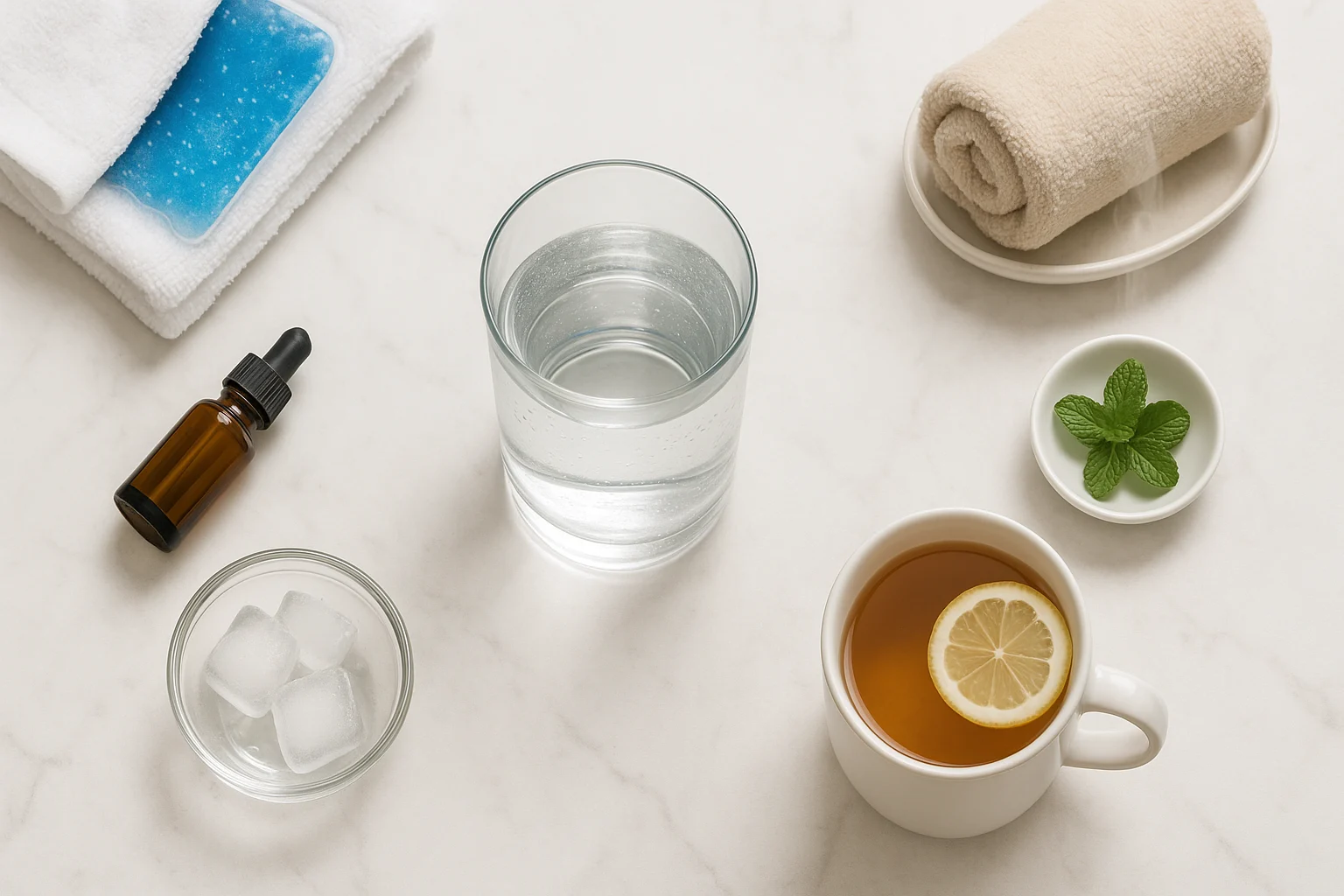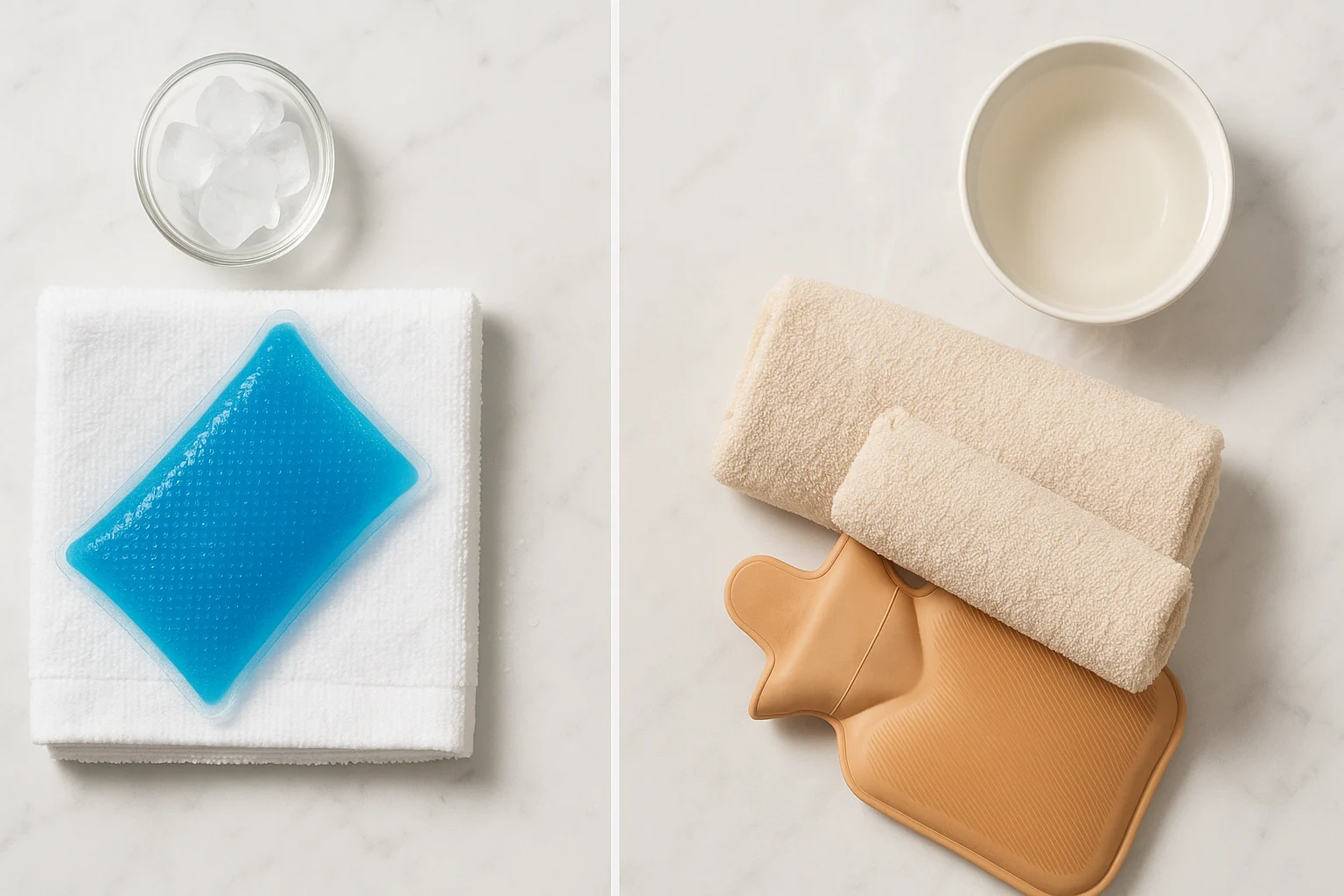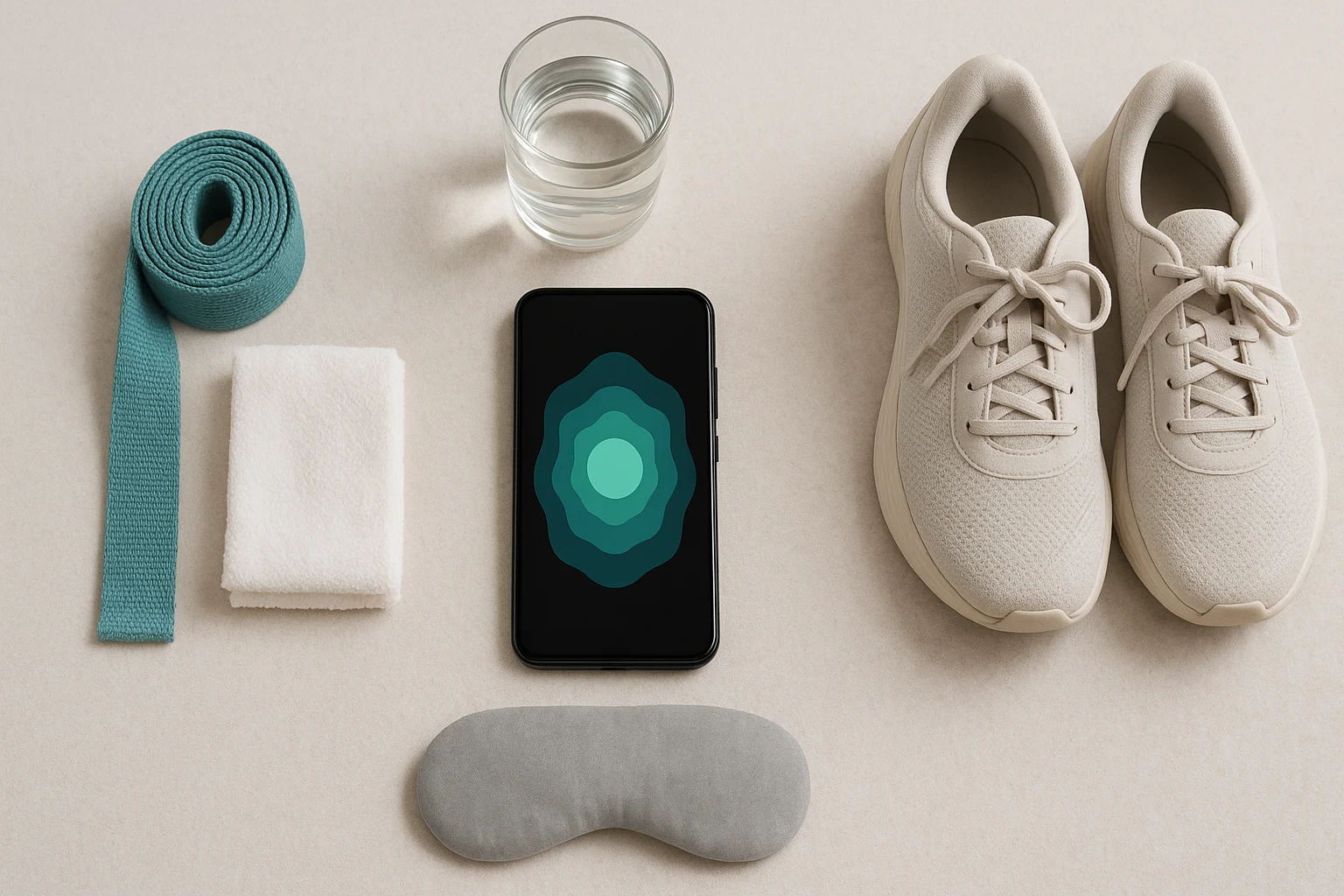
Headache derailing your day? Here are fast relief tips and simple steps showing you home remedies for headache that really help. Start with water, pick the right compress, rest in a dark room, and try gentle neck stretches. Then layer options like peppermint oil, magnesium, acupressure, and mindful breathing. We’ll flag what to skip and when to see a doctor—clear cautions, zero fluff. For the broader overview, see our home remedies guide.
Use these low-risk options first and track your triggers over time to notice patterns and plan ahead.
Table of Contents
- Key Takeaways
- Understanding Headaches and Why Natural Solutions Matter
- Match Remedies to Your Headache Type
- What to Skip (and Why)
- When to Seek Medical Attention: Don’t Ignore Red Flags
- Interactive Headache Remedy Effectiveness Checker
- Frequently Asked Questions
- Conclusion: Empowering Your Pain Relief Journey
Key Takeaways
- Hydration is Key: Dehydration is a common headache trigger; drinking plenty of water can often prevent or alleviate mild headaches. 💧
- Targeted Compresses Work: Cold compresses may calm inflammation, while warm ones relax tight muscles—different paths to relief depending on your headache type.
- Herbal Allies & Essential Oils: Ginger, peppermint, and lavender offer natural calming properties when used correctly. 🌿
- Mind Your Lifestyle: Good sleep, stress management, and proper posture are foundational for preventing headaches in the long run.
- Know When to Seek Help: While home methods are great for minor aches, persistent, severe, or unusual headaches warrant a doctor’s visit. 🩺
Understanding Headaches and Why Natural Solutions Matter
Headaches are common, but they’re not all the same. Tension headaches feel like a tight band. Migraines often throb and may bring light or sound sensitivity and nausea. Cluster headaches are rarer and intense, usually around one eye. Medicines help, but frequent use can backfire with rebound pain. That’s why many people start with simple, low-risk options—natural remedies for everyday ailments like hydration, compresses, and rest—then escalate if needed. For deeper background on headache types and care, see this overview from NINDS.

Match Remedies to Your Headache Type
Evidence & Safety: Benefits vary by person; small studies and guidelines suggest modest help for some options. Avoid during pregnancy or with blood thinners where noted (e.g., feverfew). Patch-test essential oils and always dilute. If headaches worsen or change pattern, seek medical care.
1. Hydration: The Simplest Solution 💧
It might sound too simple, but dehydration is a common trigger for headaches. When your body lacks sufficient water, your brain tissue can temporarily shift, triggering pain.
- How it may help: Rehydrating can improve blood flow and ease discomfort.
- How to use: Drink a large glass of water slowly when you feel a headache starting. Continue sipping water throughout the day. Aim for at least 8 glasses daily, more if you’re active or in a warm climate.
- Real-life example: Maria, a busy professional, started carrying a reusable water bottle and noticed fewer afternoon headaches when she stayed hydrated.
2. Cold and Warm Compresses: Targeted Relief ❄️🔥
The right temperature can work wonders on a throbbing head.
- Cold Compress:
- How it may help: Cold can constrict blood vessels and reduce inflammation, numbing pain. Often used for throbbing headaches or migraines.
- How to use: Wrap an ice pack, a bag of frozen peas, or a cold, damp cloth in a thin towel. Apply to your forehead, temples, or the back of your neck for 10–15 minutes.
- Warm Compress:
- How it may help: Heat relaxes tense muscles, which can benefit tension headaches from neck and shoulder stiffness.
- How to use: Apply a warm, damp cloth or a heating pad to the back of your neck or shoulders. A warm shower or bath can also help overall muscle relaxation.
| Type of Headache | Best Compress | Why it Helps |
|---|---|---|
| Throbbing, Migraine | Cold | May reduce inflammation and constrict blood vessels |
| Tension, Muscle Pain | Warm | Relaxes tense muscles and supports circulation |
3. Rest and Relaxation: The Power of Stillness 😴
- How it helps: Resting in a quiet, dark room reduces sensory load so your muscles and nervous system can settle.
- How to use: Lie down in a dimly lit or dark room. Close your eyes and slow your breathing. If possible, take a short nap. Aim for 7–9 hours of quality sleep nightly.
4. Caffeine (in Moderation): A Double-Edged Sword ☕
- How it may help (in moderation): Caffeine can narrow blood vessels and sometimes ease pain. A small amount at onset helps some people.
- Caution: Too much, or withdrawal, can cause headaches. If you regularly consume caffeine, keep to your routine; if you don’t, try a small amount only.
5. Herbal Teas: Nature’s Soothing Sips 🌿
- Ginger Tea: Natural anti-inflammatory; may help with migraine-related nausea. Steep fresh ginger 5–10 minutes; add honey or lemon if desired.
- Peppermint Tea: Antispasmodic; menthol provides a cooling sensation. Inhale steam before drinking.
- Chamomile Tea: Calming; helpful for stress-related tension, especially before bed.
- Feverfew Tea (Caution!): Traditionally used for migraines. May interact with blood thinners and is contraindicated in pregnancy—consult a clinician first.
Teas like ginger or chamomile don’t treat nerve conditions, yet they may take the edge off tension-driven discomfort that some people label “herbal remedies nerve pain.” If symptoms follow a cold, explore our cold and flu home remedies.
“Nature’s pharmacy offers gentle sips for soothing relief, turning your teacup into a haven.”
6. Essential Oils: Aromatic Comfort 👃
Looking for a natural healing oil for tension discomfort? Peppermint is a popular option when used safely and diluted. A tiny, well-diluted blend can be soothing, but patch-test first and avoid the eyes. If you like to mix your own, see our DIY natural beauty & hygiene guide.
- Peppermint Oil: Menthol offers a cooling feel and may relax tight areas. Dilute 1–2 drops with a carrier oil, then gently massage into temples/neck—avoid contact with eyes and mucosa.
- Lavender Oil: Calming and stress-reducing; diffuse or dilute and apply to temples or wrists, or add to a warm bath.
- Eucalyptus Oil: Helpful for sinus-related headaches; inhale steam or diffuse to open nasal passages.
Important: Always dilute essential oils with a carrier oil and patch test first.

7. Acupressure: Ancient Healing Touch 🙌
- How it may help: Stimulating specific points can release tension and reduce pain signals.
- Key Points: LI4 (thumb–index web, avoid in pregnancy), PC6 (inner forearm), GB20 (base of skull). Apply steady pressure for 30–60 seconds.
8. Magnesium: A Mineral for Migraines 💊
- How it may help: Can relax blood vessels, reduce inflammation, and calm nerve activity.
- How to use: Eat magnesium-rich foods (leafy greens, nuts, seeds, legumes, whole grains, dark chocolate). Discuss supplements with a clinician if headaches are frequent.
9. Stretching and Gentle Exercise: Move the Pain Away 🧘♀️
- How it helps: Releases muscle tension, improves circulation, and reduces stress.
- How to use: Try neck stretches (tilts/rolls), shoulder rolls, brisk walks, or light yoga. Avoid strenuous activity during an active headache.
10. Mindfulness and Meditation: Calming the Mind 🧠
- How it helps: Reduces stress levels, calms the nervous system, and can improve pain coping.
- How to use: Practice deep breathing, progressive muscle relaxation, or guided meditation for 10–20 minutes daily.
What to Skip (and Why)
1. Excessive Caffeine Consumption ☕❌
While a little caffeine can help, too much can lead to chronic daily headaches or withdrawal headaches if you miss your usual dose. If you consume a lot of caffeine, reduce gradually.
2. Strong Smells and Perfumes 👃❌
Strong odors—from perfumes, cleaning products, or certain foods—can trigger headaches in many people. Consider switching to gentler options like the ideas in our natural cleaning products for asthmatics guide.
3. Alcohol (Especially Red Wine) 🍷❌
Alcohol can dehydrate and contains compounds (histamines, tyramines) that may trigger headaches. Limit or avoid if you’re prone.
4. Skipping Meals 🍽️❌
Low blood sugar can quickly bring on a headache. Eat regular, balanced meals and snacks. Planning ahead helps—see our frugal meal planning tips.
5. Poor Posture 🧍♀️❌
Slouching can lead to neck and shoulder tension that contributes to headaches. Practice good posture and take stretch breaks.
6. Unproven or Extreme “Cures” 🧪❌
Be wary of claims promising “all natural pain medicine.” Fad diets, extreme detoxes, or unverified supplements may not help—and can carry risks. When in doubt, check with a clinician first.
When to Seek Medical Attention: Don’t Ignore Red Flags 🚨
Seek immediate care if a headache is accompanied by:
- Sudden, severe pain (“the worst headache of your life”).
- Headache after a head injury.
- Fever, stiff neck, rash, confusion, seizures, double vision, weakness, numbness, or difficulty speaking.
- Headaches that worsen over time or change in pattern.
- Headaches that interfere with daily activities despite home methods.
- New headaches if you are over 50.
- Headaches with vision changes or pain around the eye.
Interactive Headache Remedy Effectiveness Checker
Your Best-Fit Headache Relief Tool
Answer a few quick questions to get a tailored suggestion.
What best describes your pain?
How intense is it right now?
What’s your preference right now?
Your best next step
💡 Tip: Adjust the compress temperature or room lighting to fine-tune comfort.
Frequently Asked Questions
Conclusion: Empowering Your Pain Relief Journey ✨
Headaches are part of life, but they don’t have to run it. By understanding triggers and choosing effective natural headache remedies—hydration, compresses, herbal supports, acupressure, mindfulness—you can take a proactive approach to comfort. Listen to your body and seek medical advice if headaches are severe, persistent, or accompanied by red flags.
This home remedies for headache guide is for general education. Remedies may help mild, short-lived symptoms but aren’t medical care. For persistent issues or safety concerns, consult a professional.